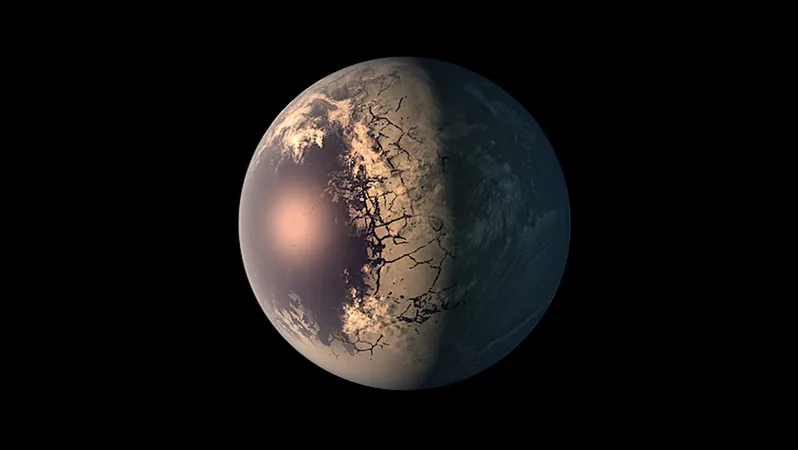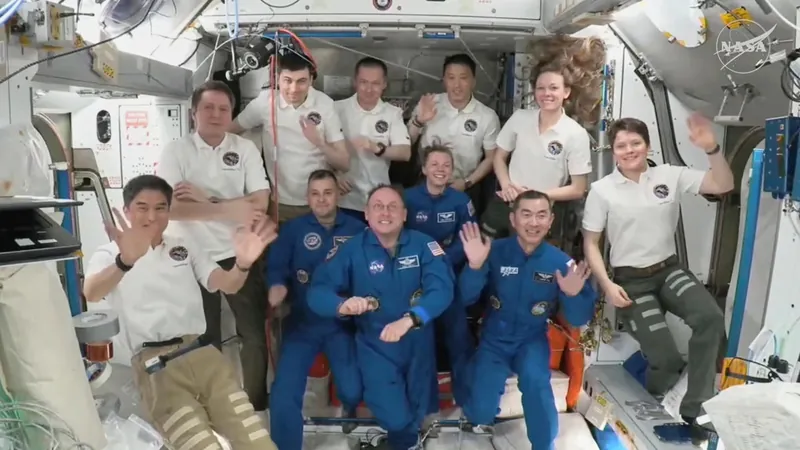
Unlocking the Secrets of Exoplanets: Are They Habitable? Discover SEPHI 2.0!
2025-06-27
Author: Sophie
The Future of Exoplanet Habitability Assessment
Scientists have just unveiled an exciting advancement in the exploration of exoplanets: the Statistical-likelihood Exoplanetary Habitability Index (SEPHI) 2.0! This cutting-edge tool is designed to evaluate which distant worlds could host life, guiding researchers in their quest for potentially habitable environments.
What’s New in SEPHI 2.0?
SEPHI 2.0 is not just an upgrade; it’s a game-changer! Here are the groundbreaking features that make this tool indispensable for astronomers and planetary scientists alike:
1. **Advanced Internal Structures and Magnetic Fields**: SEPHI 2.0 employs updated methods to estimate an exoplanet's internal structure and magnetic field, two critical components for understanding habitability.
2. **Inclusion of Orbital Eccentricity**: By factoring in how elliptical an exoplanet's orbit is, scientists can better assess the potential for liquid water on its surface—an essential element for life as we know it.
3. **Revolutionary Mass-Radius Relationship**: This new empirical relationship enhances how we relate an exoplanet's mass to its size, offering deeper insights into its potential to support life.
The Power of SADE: A Comprehensive Habitability Tool
SEPHI 2.0 consolidates atmospheric retention data, combining critical thermal and nonthermal processes into one comprehensive index. This consolidation offers a clearer picture of an exoplanet’s habitability.
Furthermore, all this data feeds into the SADE software, an innovative tool that processes key facts about exoplanets and their host stars, facilitating a thorough analysis of their physical characteristics. And guess what? SADE is available for free online!
Highlighting Potential Habitable Exoplanets
In an impressive display of performance, only a select few exoplanets—like Kepler-62f and GJ 514b—achieve SEPHI 2.0 scores close to 1, suggesting they’re prime candidates for habitability. Intriguingly, studies indicate that TRAPPIST-1 f and g outshine TRAPPIST-1 e in terms of their potential to support life.
A Bold Step Towards Discovering Alien Life!
With the implementation of estimated magnetic fields into the habitability index for the first time, SEPHI 2.0 marks a significant leap forward in our understanding of exoplanet environments. As we continue to explore the cosmos, tools like SEPHI 2.0 will be vital in uncovering the mysteries of potential alien worlds—and perhaps even finding life among the stars!









 Brasil (PT)
Brasil (PT)
 Canada (EN)
Canada (EN)
 Chile (ES)
Chile (ES)
 Česko (CS)
Česko (CS)
 대한민국 (KO)
대한민국 (KO)
 España (ES)
España (ES)
 France (FR)
France (FR)
 Hong Kong (EN)
Hong Kong (EN)
 Italia (IT)
Italia (IT)
 日本 (JA)
日本 (JA)
 Magyarország (HU)
Magyarország (HU)
 Norge (NO)
Norge (NO)
 Polska (PL)
Polska (PL)
 Schweiz (DE)
Schweiz (DE)
 Singapore (EN)
Singapore (EN)
 Sverige (SV)
Sverige (SV)
 Suomi (FI)
Suomi (FI)
 Türkiye (TR)
Türkiye (TR)
 الإمارات العربية المتحدة (AR)
الإمارات العربية المتحدة (AR)